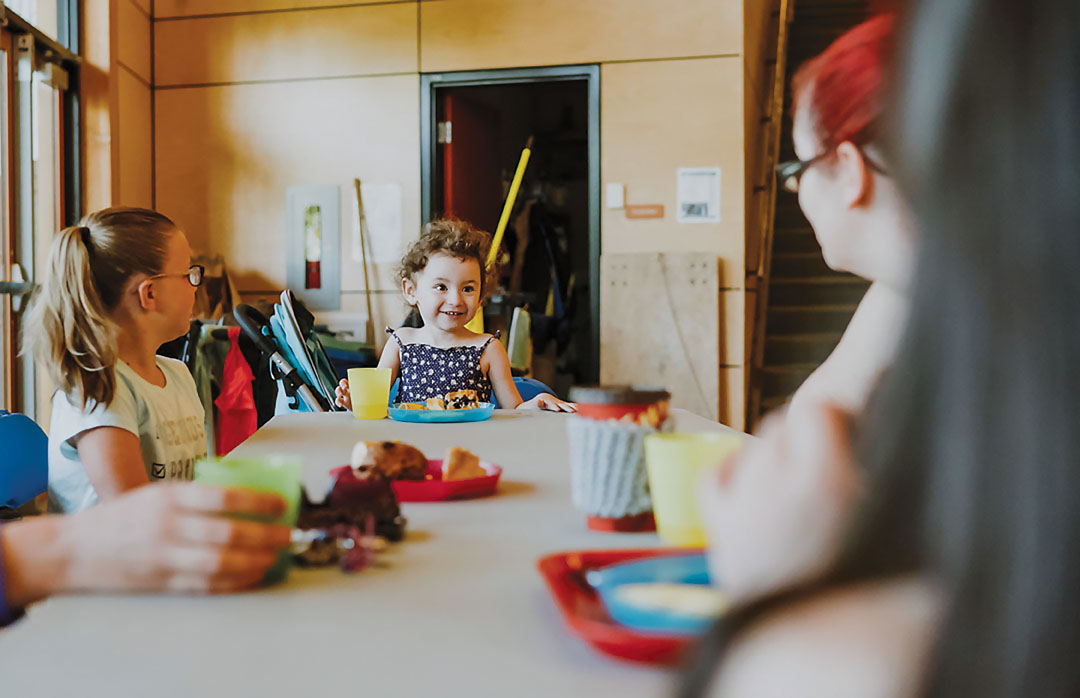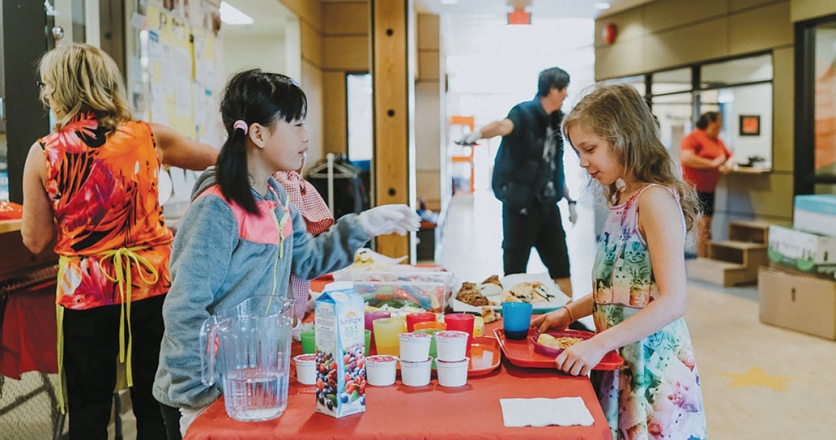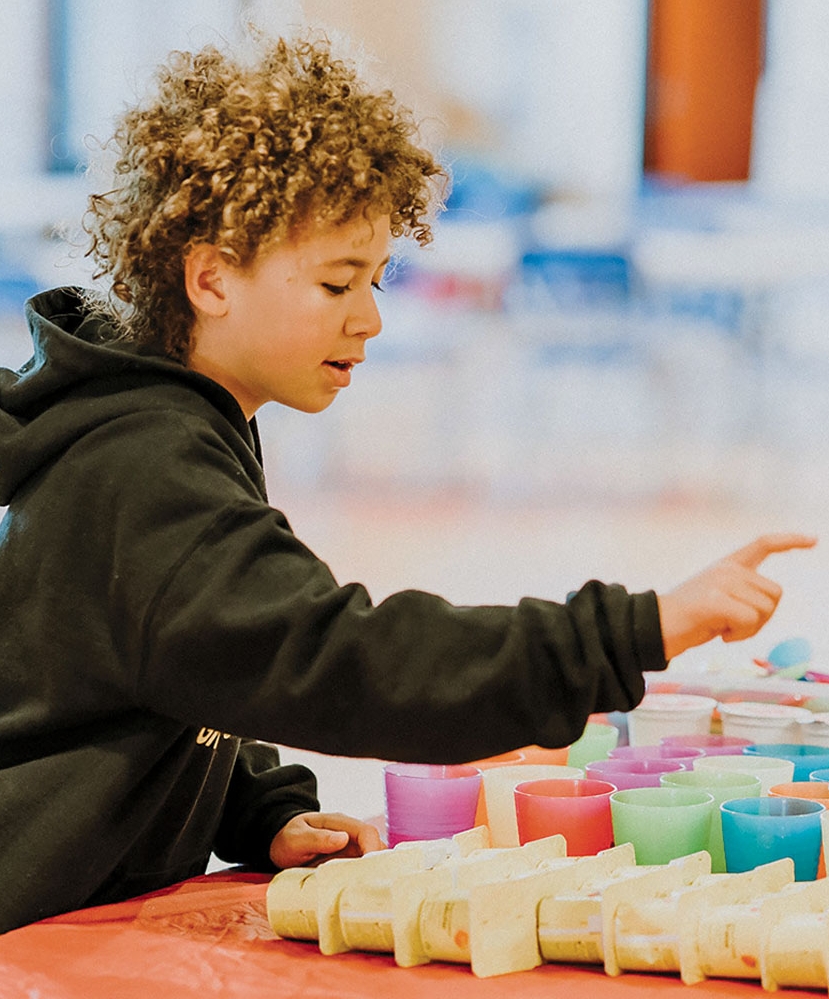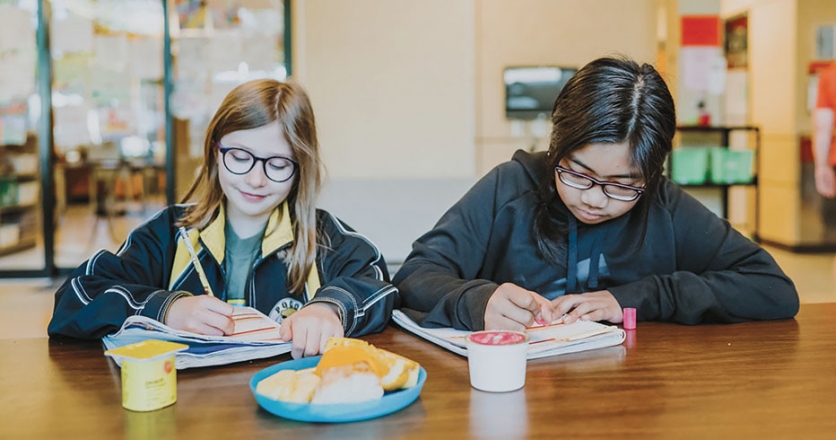Even Morning Meal Programs Have Pivoted
For British Columbia’s students who count on meals from Breakfast Club of Canada to start their days, the first meal of the day looks a little different than it did this time last year. Rather than gathering together, COVID-19 restrictions mean some students receive packaged meals in a “grab-and-go style,” while others — depending on the rules at their school and in their community — can “sit and enjoy breakfast with their siblings or cohort peers,” says Laura Ristock, development officer with the Surrey School District’s business development department. “All of our breakfast program staff work hard to ensure that our students in need are supported with a substantial morning meal.”
Ristock works with a small team to secure support for Surrey schools and various programs within the district. She works with Breakfast Club of Canada to provide insights, facilitate support, and connect it with Surrey school breakfast programs.
She began working with the breakfast club several years ago. “They stepped up and helped out when we first implemented these important programs in the district,” Ristock says. “We are proud to partner with such an incredible organization that now supports breakfast programs across 26 Surrey schools.”
Getting food into tummies
Since 1994, Breakfast Club of Canada has been helping to feed kids through school nutrition programs. The Quebec- based non-profit organization has 195 programs in B.C. alone, serving approximately 66,849 meals a year.
Why breakfast? “Many kids show up at school already hungry,” explains Ryan Baker, Breakfast Club of Canada’s programs support senior adviser. “It makes it difficult to concentrate during class. No child should have to struggle through that.”
According to the federal government, food insecurity defined as the “inability to acquire or consume an adequate diet quality or sufficient quantity of food in socially acceptable ways, or the uncertainty that one will be able to do so.” Individuals, households and even communities can experience food insecurity. Often, this is due to poverty, or an inability to afford food. In Canada, higher rates of food insecurity are found in households led by female single parents, as well as those who identify as Indigenous or Black.
Not surprisingly, being food insecure takes a massive toll on people’s health. For example, children living in food-insecure households tend to have poorer diets with lower intakes of fruits and vegetables. It’s also associated with childhood mental health problems, as well as physical health problems such as asthma in children. In adults, food insecurity is linked to conditions such as heart disease, diabetes, depression and anxiety, as well as premature death.
In some B.C. communities, nearly everyone experiences a degree of food insecurity. This is particularly true when it comes to remote Indigenous communities. Even before the pandemic, an estimated one in two children living in Indigenous communities was at risk of starting the day without a morning meal. Baker describes how in one northern B.C. community, a single truck is responsible for an eight-hour journey to deliver food to residents. When it recently broke down, no one received food.
But it’s not just remoteness that increases the vulnerability of First Nations communities: Intergenerational trauma from innumerable injustices, such as residential schools, also makes them more vulnerable to poverty. Almost half of Indigenous children live under the poverty line.
How it works
Breakfast Club of Canada operates primarily by using money raised from donors, as well as the government, to supply schools with funds to purchase food and run breakfast programs. Some programs operate on a turnkey model in which food is shipped directly by Breakfast Club of Canada to schools. It’s a personalized experience in which every school and every community is consulted to see what would work for its unique circumstances.
Although nutritional standards need to be followed, foods also need to be culturally appropriate. There is a push in many Indigenous communities to return to land-based learning when possible, teaching children about Indigenous culture in an empowering, hands-on way. This initiative can also be incorporated into the breakfast program with traditional foods. “The children might be served moose meat stew for breakfast,” Baker says. “That wouldn’t work for every community or for every school, of course, but it’s perfect for some. Breakfast doesn’t need to be eggs, bread and apples. Food can be something that we learn from as well as enjoy eating.”
At the schools, the meals are prepared by a combination of counsellors, parents, volunteers and teachers. The food isn’t restricted to children who didn’t eat breakfast: All children are allowed to participate in the program without stigma or shame, if they want something to eat. Sometimes it’s children who ate breakfast extremely early in the morning due to their families’ busy schedules or their parents’ commute. Many have had to transit far distances, for example, and by the time they’ve arrived at school, it’s been hours since breakfast.
Ristock has witnessed first-hand the impact the breakfast club has on students. “When children receive a proper breakfast in the morning they are happier and prepared to learn and focus in class. In addition to the food, the program provides a consistent routine for students and additional time to connect with their peers and positive adult role models at their respective schools.”
Indeed, it’s more than just nutritious food. The time spent eating breakfast prepared by schools offers a much-needed sense of community and connection. Adults such as teachers and counsellors can use the time to check in with the students — see how they’re doing and assess if they need any extra support, Baker explains. Conversation can happen in a stigma-free, judgement-free way. It’s an invaluable support system for kids who may not experience this elsewhere.
Along comes COVID-19
In March of 2020, the COVID-19 pandemic hit B.C. and the breakfast club’s model was “completely turned on its head” when schools were closed, Baker says. “It was a difficult period for us. We had to regroup and focus on the question: ‘How do we ensure that food continues to get into bellies of kids?’”
Spring 2020 saw B.C. grocery-store shelves picked over, and even bare, as many stockpiled food and hoarded supplies and supply chains were disrupted. The great toilet paper shortage has become something of a joke in the months since. For many people, the early weeks and months of the coronavirus pandemic were the first times they experienced feelings of temporary uncertainty regarding our ability to access food, when they realized that they couldn’t get their hands on a favourite brand of pasta sauce, for example.
However, for the millions of Canadians who struggle with food insecurity, the pandemic amplified the daunting challenges they face every day, Baker explains. “When COVID hit, it exposed and intensified these precarious situations.”
It wasn’t just school closures that led to increased food insecurity: business closures due to COVID-19 meant unemployment and increased poverty for families. Compared to statistics from 2017-2018, there has been an 80 per cent increase in food insecurity in Canada in recent months. According to the Breakfast Club of Canada website, “more than two million students are at risk of experiencing hunger on a daily basis.” From March to August of 2020, “in the span of a mere three months, our reach went from feeding 250,000 students daily to 683,921.” Here in B.C., nearly twice as many children are in a situation of food insecurity now, compared to before the pandemic.
It was an incredible thing to see what could be done by so many people who came together to help solve the problem. Within a week of the March school closures, Baker recalls, the organization had a call to action and a new plan, including contact with donors past and present, relationships with community groups, partnerships with businesses and food producers and assistance from the government. It meant a lot of creative thinking. Sometimes it meant families receiving gift cards or food hampers. Sometimes it meant elders in remote communities loading up at grocery stores for the entire community. “I can’t express my gratitude enough for the countless hours of everyone involved, most of whom were volunteers,” says Baker.
Ristock thinks back on March 2020 as a challenging time as well, but one that spurred action. “When news of province- wide school closures hit back in March due to the COVID-19 pandemic, our district identified the continuation of our meal programs as a key priority.”
She describes how the district developed a plan to ensure vulnerable students could continue receiving nourishing meals, even with the school closures. The adapted meal program used carefully selected sites within the district as hubs. “We would also deliver meals if a family was unable to pick the food up from one of our hubs due to varying challenges,” Ristock adds.
The second wave
When schools reopened in the fall of 2020, the breakfast club’s meals resumed. “From a kid-based perspective,” Baker says, “we’re happy that schools are open, even if they look different.” He explains that for so many children, school is much more than academic lessons. For vulnerable or at-risk kids, school can provide community, a safe environment and supportive adults like teachers and counsellors.
However, the breakfast programs, like everything else in COVID times, looked different when schools resumed. For starters, most school kitchens aren’t large enough to handle multiple people preparing the meals at a safe distance. “Fewer people are allowed,” Baker explains. “Sometimes it’s only one person who can prepare upwards of 100 meals. It’s amazing to see the amount of work that goes into it, but it’s really hard on the volunteers.”
Ristock elaborates. “Although we have had a unique start to this school year, we continue to make progress and strive to ensure our students are able to feel safe and cared for.” Health and safety plans include regular hand-washing for staff and students, as well as physical distancing.
Meal times have also changed. Since most groups aren’t able to congregate to eat, the breakfasts or snacks are generally now individually packaged in a grab-and-go style, Baker says. Of course, this means that in many cases some of the important social connections — the morning drop-in and check-in from teachers and counsellors — is lost with the new model. “The kids still need that supportive check-in; they rely on that. It just needs to look a bit different right now, and it takes more logistical work,” Baker says.
What’s next?
Of course, no one can tell the future in terms of COVID-19, or otherwise. For Baker, the focus is on short- and long-term goals for the organization, including adapting to whatever challenge comes its way.
“My dream is to see no more child poverty or food insecurity, and therefore our organization wouldn’t be needed,” he says. “That’s the ultimate goal. Emergency food programs are important, but they don’t address the core problem. We at Breakfast Club of Canada can’t solve this problem alone. But we can help communities with food sovereignty, through programs such as community fridges, communal meals and food deliveries.” He would also love to see a national child nutrition program.
Baker insists that food security can mean something different for each community. “They can define for themselves what food security looks like for them. We consult with them, but they know what’s best for them and their unique circumstances. We rely on the important relationships we have within different communities.
Support Breakfast Club of Canada
Although volunteers are usually welcomed, COVID-19 has made in-person volunteering more challenging to do safely. However, donations are always needed and very much appreciated. Baker encourages people to visit the organization’s website at breakfastclubcanada.org to donate.
“After all, in 20, 30, 40 years, these kids are going to be running our world and solving all of our problems,” he says. “It would be a moral failing if we didn’t ensure that kids had enough to succeed.”
Ristock agrees. “We know that breakfast is essential to ensure our young learners are able to thrive, both in and out, of the classroom. My true hope for the future is that every child and youth [who] needs breakfast support is able to access it.”
Breakfast Club of Canada
Regional office, 411-470 Granville St., Vancouver, B.C.
breakfastclubcanada.org








